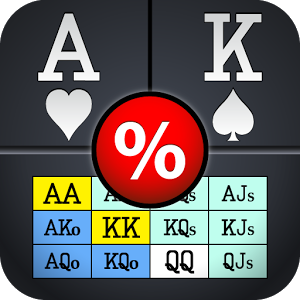To continuation-bet or not to continuation-bet
Editor’s note: What follows is an edited excerpt from Jeff Hwang’s book, Advanced Pot-Limit Omaha: Small Ball and Short-Handed Play.
When you are on the button and everybody has folded to you, you should be playing at least 50 percent to 60 percent of hands — and probably 60 percent to 70 percent of hands. At this point, the decision regarding whether or not to play your hand will be based largely on what you are holding; if you have anything that doesn’t qualify as trash, you are probably going to play the hand.
In addition, if you have a premium-class hand like 10-9-8-7 double-suited or A-A-Q-J double-suited, you are probably going to bring it in for a raise, to build the pot for value.
The real question at this point comes with the lesser hands, and whether or not you are going to open-limp or come in for a raise and attempt to steal the blinds. The two main factors guiding your decision are:
1. What is in your hand.
2. How loose or tight the blinds are.
Before we get into how to use these factors to make a decision, we should talk about why these factors are important. What it really comes down to is finding a balance between pot control and picking up the blinds.
For example, let’s say that you have the J 6
6

































If the blinds are both extremely tight, you can safely raise and expect to pick up the blinds. But if one or both blinds are fairly loose and you expect to see a flop, you should be more concerned about how the hand is going to play out after the flop. The problem here is that you are not likely to hit much to bet after the flop with your three small cards and a big dangler, and so much of the time, you will find yourself shutting down after the flop in the face of any resistance.
That said, rather than build a big pot preflop, you are better off limping in. In doing so, you are essentially dictating that this will be a small pot unless you catch a big-play flop for your hand, like the J





































The same goes for a hand like the J











































Blinds-Stealing Standards From the Button
We’ll start with basic blinds-stealing standards from the button against most opponents, which you can adjust downward depending on how tight your opponents play. Naturally, all of these hands should be at least single-suited. Against most opponents, you should raise with the following:
• Premium-class hands: Any four-card rundown with a suit, from A-K-Q-J down to 6-5-4-3; four-card rundowns with a bottom or middle gap and a suit, such as A-K-Q-10 down to 6-5-4-2 and A-K-J-10 down to 6-5-3-2; big double-pair hands with a suit; premium-plus A-A hands; premium pair-plus hands, such as the Q



















































































• Big speculative wrap hands: Speculative wrap hands with high-card strength, such as Q-J-9-7 and Q-J-10-7. You generally should open-limp with smaller speculative wrap hands, such as 7-6-4-2.
• Three Broadway cards: Any three cards 10 and higher, such as K-Q-J-X, K-Q-10-X, and A-J-10-X.
• Three middle rundowns with an overcard kicker: In other words, you can bring it in for a raise with Q-9-8-7, but you generally should open-limp with 9-8-7-2.
With that list in mind, the tighter the blinds are, the wider your blinds-stealing range should be. If the blinds are extremely tight, you might consider raising with virtually any hand that you choose to play, with one caveat: You generally should avoid trying to steal the blinds with hands containing dry pairs, such as J-J-5-3 with a suit, Q-Q-10-7 with a suit, or K-K-J-2 with a suit, as you are likely to be handicapped after the flop unless you flop a set. However, a hand like the A























































































Adjustments for the Cutoff Seat
When everybody folds to you in the cutoff seat, you have another obstacle to overcome: the player on the button. Generally speaking, you should tighten up a bit in the cutoff seat; but how much so depends on how loose, tight, and/or aggressive the player behind you is.
Ideally, you’d like to have a really tight player on your left who rarely, if ever, raises preflop. This way, you effectively get to have the button twice, and as such, don’t have to adjust your game much. You can generally raise as if you’re on the button and everybody has folded to you, and limp in with the hands with which you would ordinarily limp in from the button.
But if the player on your left limps frequently but plays tight and folds often against raises, you might be a little more inclined to raise in order to knock him out and secure the button.
If, instead, the player on your left is extremely loose and will call any preflop raise, you need to tighten up your blinds-stealing requirements; otherwise, you will often find yourself playing heads up out of position after the flop when the button calls your raise but the blinds fold. In fact, with this type of player on your left, you can still open-limp with a wide range if the button doesn’t raise much preflop, but you should avoid opening with a raise with most everything except the premium-class hands.
Now, if you have a maniac on your left who raises preflop at every opportunity, you have even more problems, as you can no longer figure to see the flop cheaply. In that case, you need to tighten up considerably. You also should look to change seats, or find a different game.
Submit your review | |










